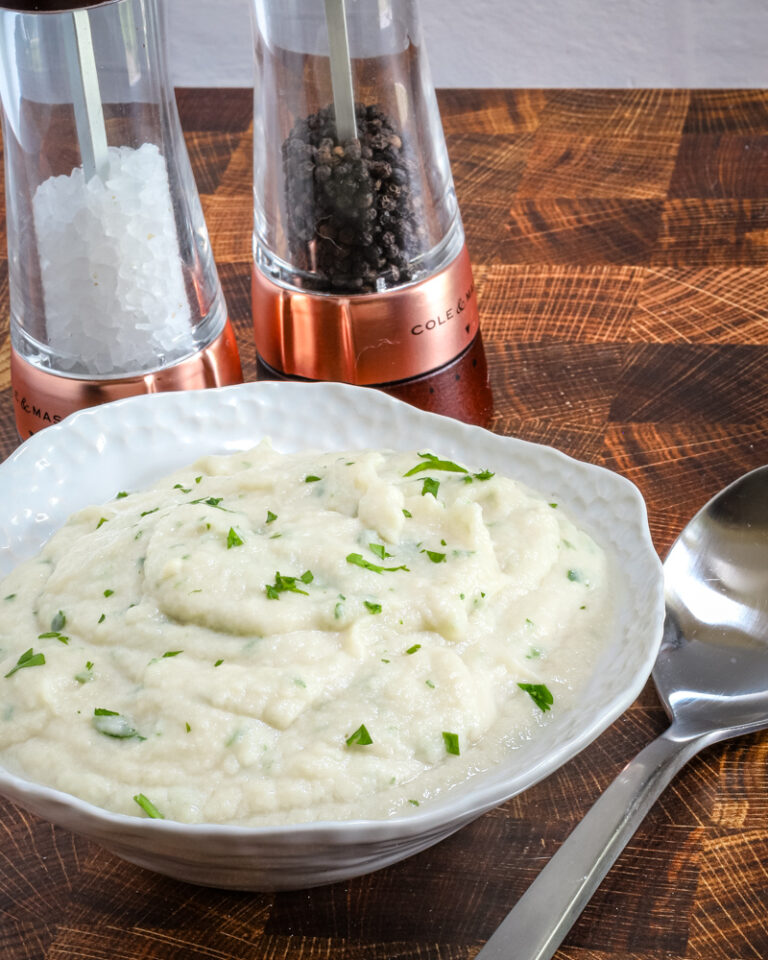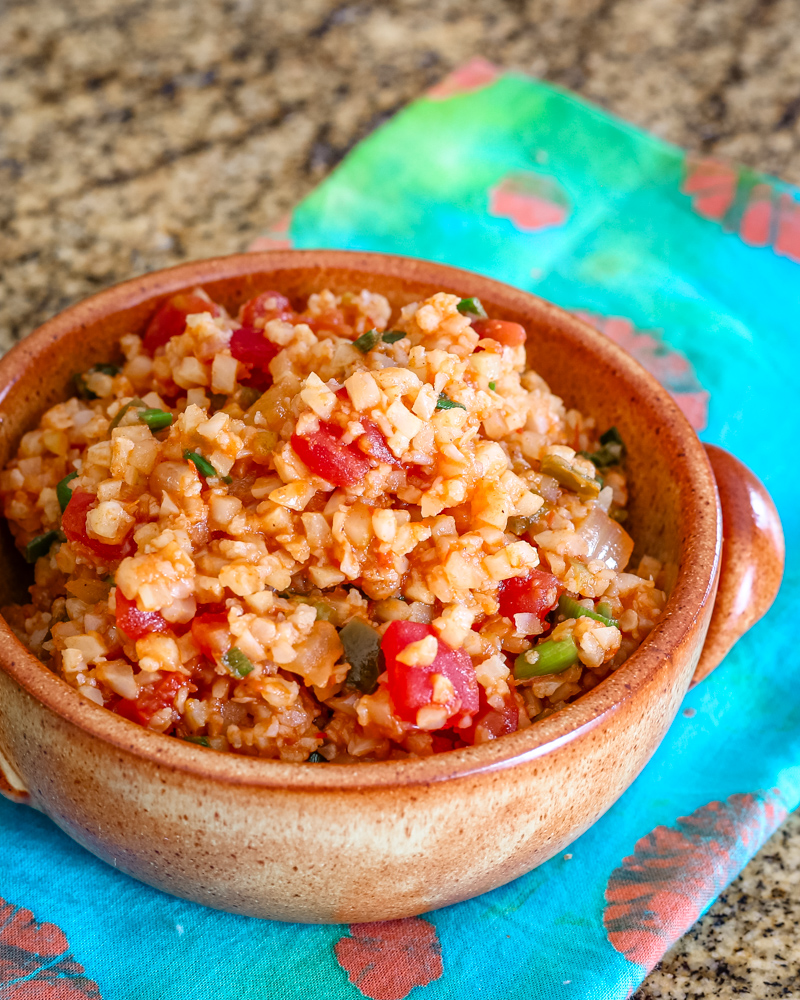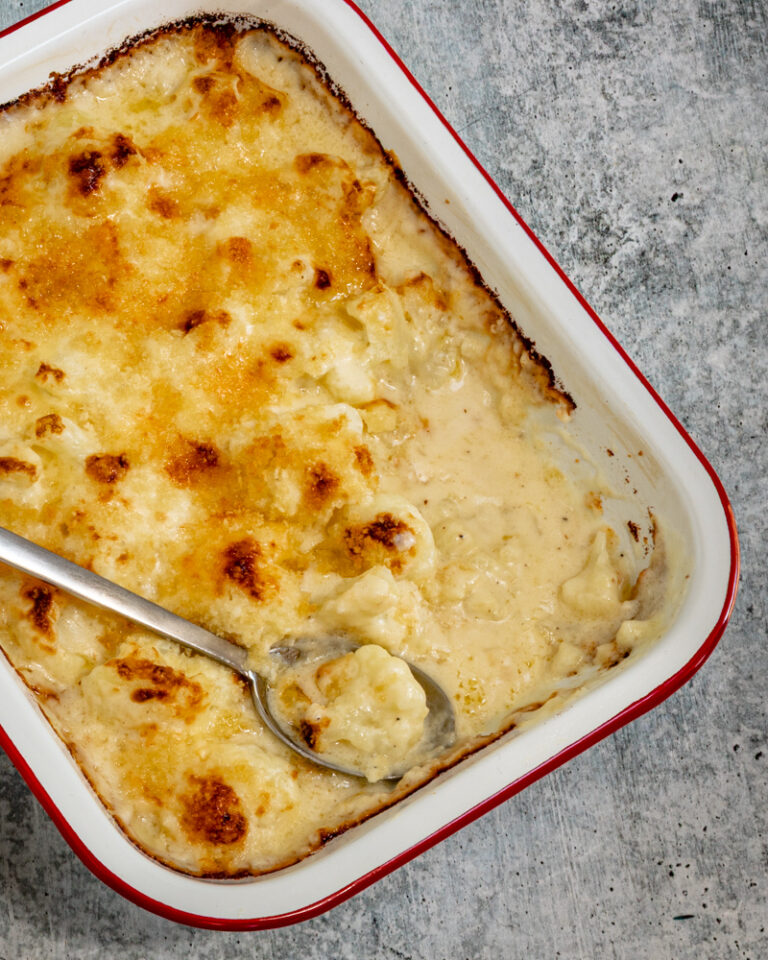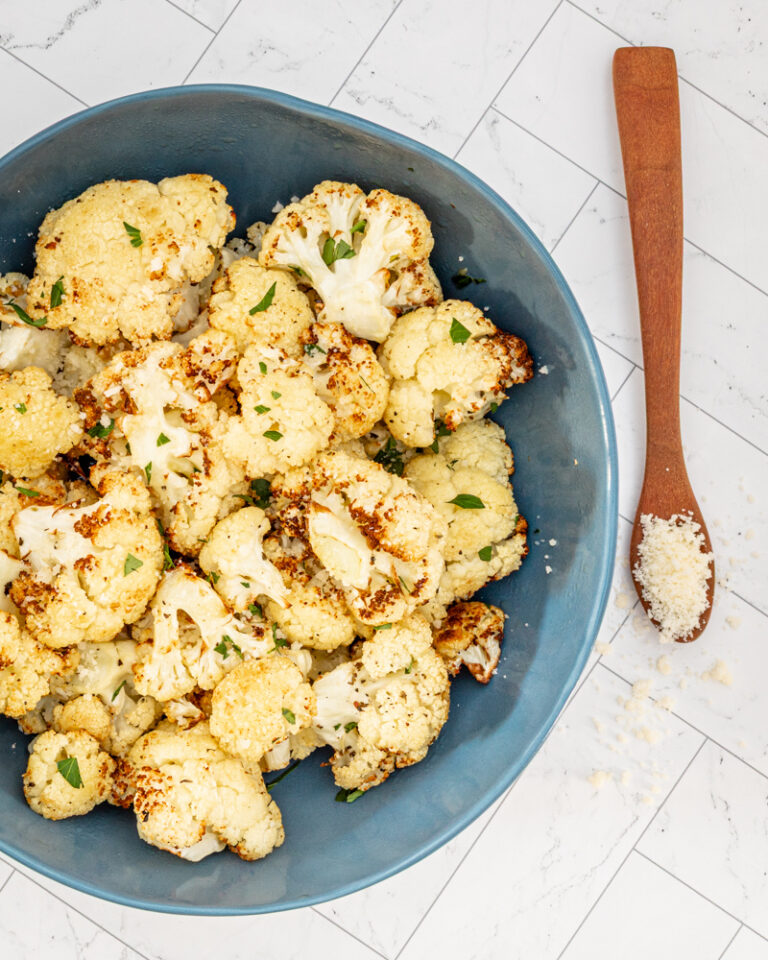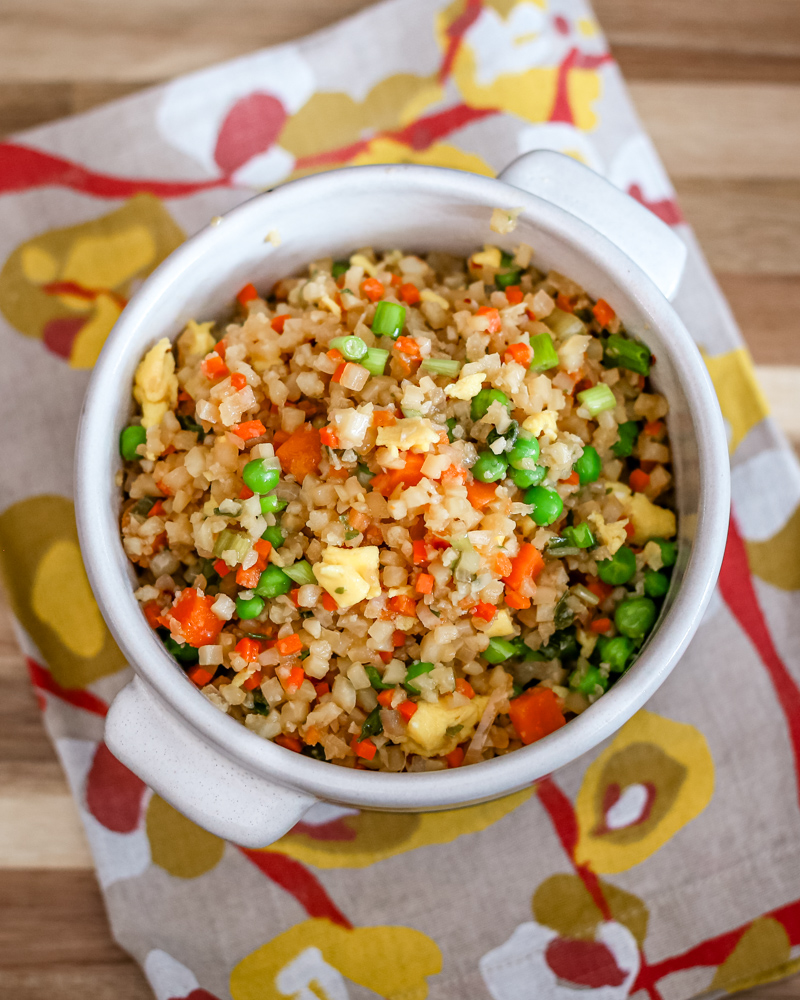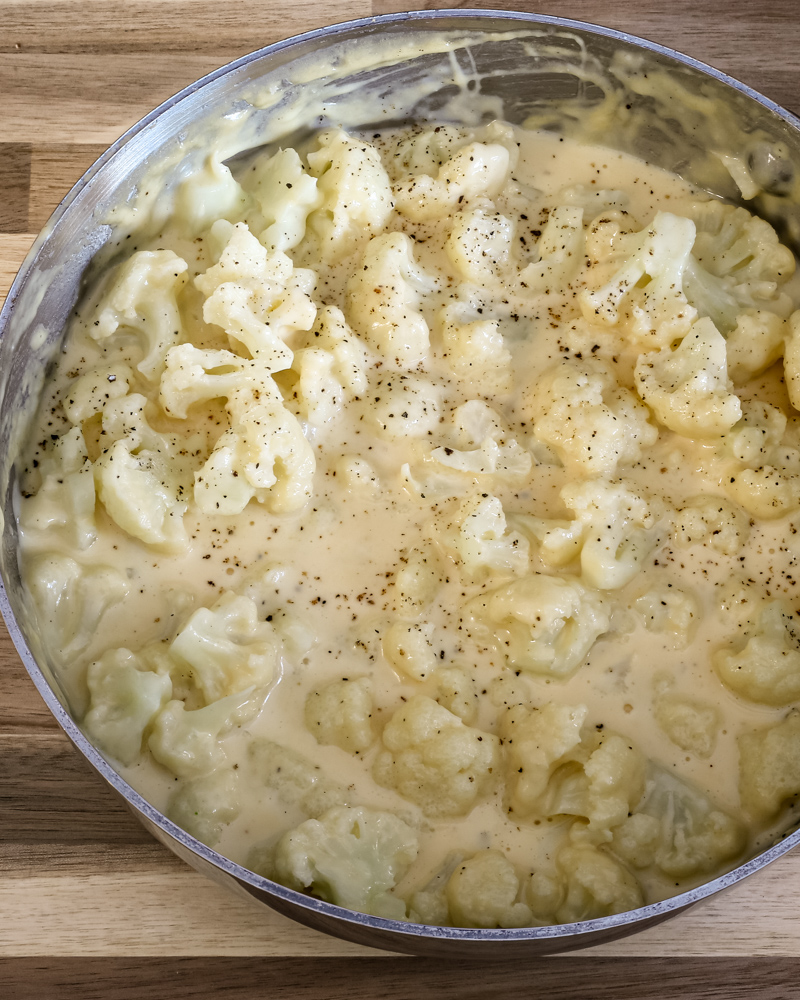Whole Roasted Cauliflower
This simple roasted cauliflower is a breeze to prepare and cook. A Dijon mustard and olive oil coating give the cauliflower flavor and color.

This whole roasted cauliflower is a beautiful and simple way to bring out the vegetable’s natural flavor. Roasting it whole keeps prep minimal—just microwave briefly, coat with a flavorful Dijon mixture, and pop it in the oven.
The Dijon mustard and olive oil add both color and a tangy, savory finish, giving the cauliflower a golden crust and subtle sharpness. Serve it as a light main or a striking side dish alongside grains, greens, or protein.
What You’ll Like About This Dish
Minimal prep. Just microwave, season, and roast—no chopping required.
Flavorful coating. Dijon mustard and olive oil create a delicious crust.
Visually impressive. Serve the whole head intact for a stunning presentation.
Versatile side or main. Great with steamed greens, grains, or sauces.
Ingredient Notes
- Cauliflower: Choose a medium to large head with tightly packed florets.
- Dijon mustard: Adds tang and a golden finish—classic French flavor.
- Olive oil: Helps brown the exterior and carries the seasoning.
- Black pepper: Just a bit enhances the overall flavor—add salt if desired.
Steps to Make Whole Roasted Cauliflower
- Preheat the oven and prepare the cauliflower by trimming leaves and cutting out the core.
- Rinse and microwave the head until just tender.
- Place in a greased baking dish and coat with the mustard and oil mixture.
- Roast until golden and tender.
- Slice into wedges and serve warm.
Tips for Roasting Whole Cauliflower
- Microwaving first ensures the inside cooks through without over-roasting the outside.
- Brush the mustard-oil mix thoroughly over all surfaces for best flavor and browning.
- Check tenderness with a skewer or sharp knife inserted into the center.
- Let rest a few minutes before slicing so it holds together better.
Recipe Variations
- Spicy version. Add crushed red pepper flakes or a dash of hot sauce to the Dijon mixture.
- Herb crust. Mix in thyme, rosemary, or Italian seasoning with the mustard.
- Garlic flavor. Add 1 to 2 cloves of minced garlic to the olive oil before brushing.
- Cheesy topping. Sprinkle with grated Parmesan during the last 10 minutes of roasting.
- Tahini drizzle. Serve with a lemon-tahini sauce for a Mediterranean touch.
Serving Suggestions
- Serve on a bed of steamed spinach, lentils, or sautéed greens.
- Pair with roasted chicken or fish for a complete meal.
- Add grains like couscous, quinoa, or farro for a hearty vegetarian plate.
- Include a drizzle of yogurt or tahini sauce for richness.
How to Store and Reheat
Refrigerate: Store leftover roasted cauliflower wedges in an airtight container for up to 4 days.
Freeze? Not recommended—whole roasted cauliflower can become mushy when thawed.
Reheat: Warm in a 350°F oven until heated through, or microwave individual portions briefly. For best texture, reheat in a skillet or oven to preserve the crust.
See Also:
Cauliflower Fried Rice
Roasted Cauliflower and Cheddar Cheese Sauce

Whole Roasted Cauliflower
Ingredients
- 1 head cauliflower
- Freshly ground black pepper
- 2 tablespoons Dijon mustard
- 1 tablespoon extra-virgin olive oil
Instructions
- Heat the oven to 350 F.
- Remove the outer leaves from the cauliflower and cut off the bottom of the stem. Cut the hard core out of the cauliflower, but take care not to cut into the florets. Rinse the cauliflower and place it in a microwave-safe dish. Microwave on 100% power for about 7 to 9 minutes, or until the cauliflower is just tender.
- Remove the cauliflower to lightly greased baking dish.
- Combine the mustard, olive oil, and pepper. Brush or rub the mixture over the head of cauliflower.
- Bake the cauliflower for 20 to 30 minutes, or until tender.
Nutrition
Disclaimer:
Our nutritional information is based on a third-party application that analyzes the ingredients list to determine the values. The information is meant to be helpful, but should be considered an estimate. Values may differ depending on measurements, brands, serving variations, and database availability.



